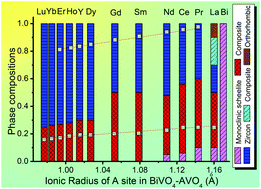BiVO4 based high k microwave dielectric materials: a review
Abstract
The BiVO4 material has attracted much attention in recent years due to its active photocatalytic properties under visible light, bright yellow color as a nontoxic pigment, and its high relative permittivity (εr) and Qf (quality factor, Q × resonant frequency, f) as a potential microwave dielectric ceramic. In this review, we introduce the origin, synthesis, crystal structure and phase transitions of the four polymorphic phases of BiVO4: orthorhombic (pucherite), zircon (dreyerite), scheelite monoclinic (clinobisvanite) and scheelite tetragonal. We then precis recent studies on doped BiVO4 ceramics in terms of A site, B site and A/B site complex substitutions. Low sintering temperature (<800 °C) and high εr values could be obtained in some solid solution ceramics and near zero temperature coefficient of resonant frequency (TCF/τf) values could be achieved in layered or granulated particle composite ceramics. Besides, a series of temperature stable high εr microwave dielectric ceramics can also be obtained for many co-fired composite ceramics, such as BiVO4–TiO2, and BiVO4–TiO2–Bi2Ti4O11. The high εr, high Qf value, low sintering temperature and chemical compatibility with some base metals suggest that BiVO4-based materials are strong candidates for both LTCC and other microwave device applications in current 4G and future 5G technologies.

- This article is part of the themed collection: Recent Review Articles


 Please wait while we load your content...
Please wait while we load your content...